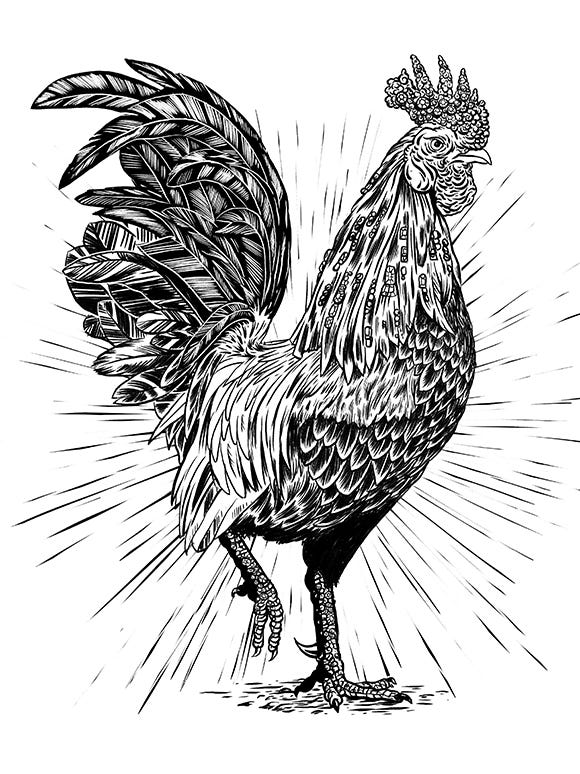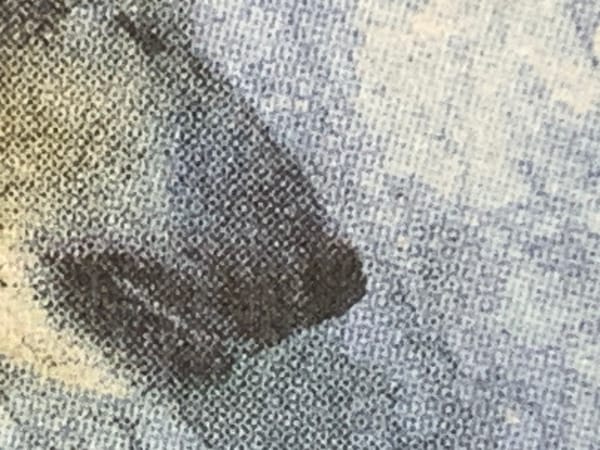The Nineteenth Best Email We Wrote This Past Weekend


The Nineteenth Best Email We Wrote This Past Weekend: HMM WEEKLY PREMIUM NEWS-LETTER for Tuesday, May 28, 2019
Good morning! Here is the latest edition of the SUBSCRIBERS ONLY Hmm Weekly Premium Newsletter, distributed exclusively to you, our paying members, supporters, and patrons. Thank you very, very much for your interest and support! If you're feeling even more generous of spirit, please share this message with your uninitiated or laggard friends, so that they too can take the opportunity to join us, and please spread the word about HMM DAILY DOT COM any way you see fit. We also have a YouTube. If you find yourself on that web tube and could see your way clear to hitting the SUBSCRIBE button, we would appreciate you even more. Thank you!
LAST WEEK ON HMM DAILY

- In a Constantly Changing San Francisco, Change is Constant
- The Diner Menu Will Never Change
- Mr. Blandings Sweats the Help
- Rahm Emanuel Blames Obama for Trump
- The Creeping Emptiness
- Donald Trump Doesn’t Want to Be Impeached
- Good Journalists Don’t Get in Trouble, Because They Don’t Exist
- UNSOLICITED TESTIMONIAL: Penn Station Lavatory
- Memorial Day Is War Crimes Day Now
- Take a Day to Remember
***
PROGRESS DEP'T

My iPhone Is Too Old for the Times
Somebody tweeted something about a New York Times story last week. This is probably how I encounter the majority of Times stores; I subscribe to the paper, but I tend to actually read it by letting my Twitter feed sort through the stories in order of how stimulating they are. I can't remember what the story was at all, or whether the nature of the tweet was "Look at this awful news that the good New York Times is reporting" or "Look at this awful thing the New York Times did," both of which at any given moment seem equally likely and equally true.
I clicked on it, and I got a blank page. I tried again and got the same non-result, and I did whatever semi-conscious troubleshooting routine I do when tweeted stories don't load: quitting and restarting the app, re-tapping the screen. Finally I resorted to copying the link and pasting it into a standalone browser app. No luck. Nor in the other browser app. I could not read the New York Times on my phone.
I tweeted to see if anyone else was having the problem and the only response I got was a backchannel message from a former boss, who periodically talks about how he's quitting Twitter, telling me it was a bad tweet.
By now, I don't really expect my phone problems to be reproducible. My phone is an iPhone SE, running iOS 9.3.5, which the internet tells me was released two years and nine months ago. Since then, if I counted right, Apple has put out 38 different new versions or updates of iOS. Every evening, my phone tries to trick me into downloading the newest one by asking me if I want to do it, and then asking me again, using a lock screen, where if I absent-mindedly unlock my phone I'm consenting to the new software.
I refuse to do it because I know that Apple wants to use the new software to sabotage my phone's battery life and otherwise make it unusable, so I will have to buy a new and worse phone. This phone is the size I like and it has a headphone jack, and I don't need a different phone for any reason except that now and again some app stops working right or won't update anymore. My Slack app won't display any image files, for instance, which is a good way to get a feeling for how much of what goes on in Slack is people dropping screenshots in there. My Major League Baseball app crashes out every time I try to check the Orioles score.
Now it was the Times. Someone at the Times must have improved something, and that improvement had stretched the Times website out beyond my phone's capabilities. Sometimes the headline and top of the story would load for a fraction of a second before going blank, sometimes they would never show up at all. The links and commentary about the stories kept scrolling by, but I couldn't do anything about them unless I was at a computer.
It didn't take long to start adjusting. Over the holiday weekend, I was traveling to Los Angeles and mostly not using the laptop I'd brought. On my phone, I saw that people were mad about the Hope Hicks article—so mad they were making threads about how bad it was. I couldn't open the article to check it against their reactions, so I didn't go that deep into the reactions, since I didn't know what I personally thought about the story. The photo looked bad, though. Bret Stephens wrote something dumb, judging by the screenshot I saw and the entirety of Stephens' published work, but I didn't look the whole thing up till the spasm of reaction he'd wanted had already passed, so it seemed more sad and feeble than infuriating. The UFO piece zipped by as an unexplained phenomenon, to be studied later.
Was this better? It meant fewer spikes of annoyance delivered through my annoyance-delivery device. It required me to form a memory about a thing if I wanted to go to the website later and look it up, and the process of going to the website meant I saw other stories, for reasons other than that they had provoked somebody into commenting on them.
Still, in principle, I would rather be able to read the newspaper I pay for over the wireless service I pay for. I just remembered that the Times has an app of its own, and I tried to download it, only to be told it is incompatible with anything earlier than iOS 11.0. Little by little, everything decays and becomes unusable. This was also the lesson of flying to and from Los Angeles, through broken airports on a broken airline, coming back on a redeye that was delayed three hours and on which the seats, in addition to having been shrunk and shrunk again, were stubbornly tipped forward so it was impossible to sink back and sleep. The seatback screens had been replaced by clamps for each passenger's personal electronic device, but I didn't buy the wi-fi. Progress will continue and one by one, the apps and websites will die off my phone. Someday maybe even Twitter will stop working, and I truly won't know what I'm missing.
***
CONSUMER UPDATE DEP'T

Green Sneakers Are the Wrong Kind of Nostalgia
For me there is no swankier sneaker than a fresh pair of low-top suede Converse One-Stars. Converse is ostensibly a Basketball shoe, and while no Pro player is wearing anything remotely resembling a suede low-top Converse, the non-hightop Converse One-Star represents the acceptable non-athletic side of Converse. Back in the day Converse used to call the low-top version Converse Coaches, and we all know the Coach is the low end of the physical activity in sports. I find low-top Cons to be stylish, comfortable, and accurately sized for the orthotic inserts I have to wear on account of my high arches, ouch.
With all the iterations of “throwback” and “retro” sneaks, I usually want to score a pair, but Converse is killing me with the latest strategy of publishing their shoes in limited availability.
The 1974 Converse original returns in a great seasonal color with premium suede material.
Soft, durable, premium suede construction
Limited edition, seasonal colors
OrthoLite insole to keep every step cush
Imported
The CONVERSE ONE STAR PREMIUM SUEDE LOW IN GREEN. Wow, I want the suede, and the OrthoLite insole, whatever that is, and even Imported is OK by me until I hear otherwise, in respect to Child Labor or something, but “Limited edition, seasonal colors” in this case means green. Converse is messing with me for liking Converse! Green! Ugh! The color of the Boston Celtics. I’m a Knicks fan, haven’t I suffered enough?
EPILOGUE: In my research for this paragraph, I have determined I can’t rationalize buying a pair of Converse until they clean up their act on the sweatshop front. I was not happy when they got bought by Nike, and apparently they have absorbed their parent company’s bad labor practices.
***
NINETEEN FOLKTALES: A SERIES

Illustration by Jim Cooke
18. The Cockerel
A thief stole a masterfully bejeweled golden egg from the house of a nobleman, and while fleeing, decided to hide his loot in an old chicken coop he was passing, to fetch it later.
Before he could retrieve his prize, the thief was apprehended and hanged for an unrelated theft, involving a cartload of silk. The golden egg, meanwhile, had been left in the corner of the henhouse presided over by the oldest and fiercest of the hens. Her laying days had passed, after a prodigious career, but she had escaped the stew pot on account of her pacifying influence on the younger hens, and perhaps some respect or dread she inspired in the couple who owned the flock.
Finding this cold, strange egg in her domain, then, the hen rolled it into a thick part of the straw and settled down to brood on it. As she sat, she felt, through her old breast, the egg warm up.
The farming husband and wife noticed the hen had retreated to one spot, but thought nothing much of it and left her undisturbed. They were certain she could not have laid any egg, and they were, as mentioned, a little afraid to interfere in her crotchets.
So the hen tended the egg, patiently and with devotion, until one morning she felt it rock and crackle beneath her. She stepped back and the finely wrought shell cracked open, to reveal a golden chick, with gleaming fuzz and eyes that glittered like dark gemstones. Strong and alert, the chick immediately gobbled up the remains of its eggshell, then trotted with its mother out into the yard and began scratching for grubs.
The woman farmer, coming out to scatter corn for the flock, saw the shining chick and was amazed. But the hen fixed her with a cold stare, and she left the corn without prying further. Nor did her husband interfere. "One more for the flock," they said to one another, and left it at that.
The chick swiftly grew into a fine golden cockerel, with a comb like rubies on its crown and sharp silvery spurs on its ankles. The incumbent barnyard rooster gave the young bird a wide berth and began to crow in the dawn timorously, while the cockerel climbed to the rooftop and sounded forth like martial trumpets, and the old hen looked on in pride.
Sometimes the neighbors around the countryside would see a flash of gold near their own hen yards, or hear a commotion in the night. Three weeks later they might find a new-hatched chick of their own, with here or there among its fuzz a fleck of brightness, which would prove, when molted, to be a tiny fluffy feather of real gold. The proceeds from these specks of gold--or sometimes a full golden feather--did nothing to diminish their avarice at the sight of the brilliant bird.
One night, one of the other farmers stole to the chicken coop, bringing with him a canny and bloodthirsty trained ferret, which he sent through the window. He heard a clattering and a great fluttering of wings, then a ripping and squawking and squealing. The ferret did not emerge. Thinking he would have to pry the beast from the golden carcass, the interloping farmer stuck his head and shoulders through the door of the coop, only to see the cockerel, spurs and beak glistening with blood, standing over the shredded remains of the ferret. He pulled back from the door in alarm, but not before one kick of the spurs had notched his ear.
Another neighbor, less subtle and more frankly larcenous, came away from the coop with one hand slashed open to the bone. Yet another tried setting a snare, and was seen afterward with a limp and a wryneck. Eventually fear got the better of greed, and the golden bird and his mother were left in peace.
Over time, however, word of the unusual cockerel—and a portion of the golden fluff and feathers that were circulating in commerce—reached the court of the prince in whose dominion the farm and the chicken coop fell. He summoned the farmer couple to his palace, ordering them to bring the bird with them for his inspection. With the aid of some fresh cucumbers, they led the cockerel and his mother hen into a large and comfortable basket, and set off in a wagon to see the prince.
The prince was dazzled when they opened the basket and the cockerel stepped out. He declared that such a living treasure could belong nowhere but in the royal treasury. The farmer couple looked uncertain. "Your majesty, this is a bird of the farmyard," the woman said, haltingly, but the prince waved off her concerns. He ordered his servants to bring the farmers fifty times the cockerel's weight in gold, and then the servants ushered the bird down cool tapestry-hung halls to the secure heart of the palace, where the prince kept his fortune. The mother hen, glaring at the prince, followed close by.
The treasury, for all its fortification, was a bright and airy room, lined with shelf after shelf of gold and silver coins neatly stacked in coffers, supplemented by an assortment of finely wrought jewelry, statuary, and other precious goods. On a high stone counter stood the royal crown and scepter. The prince had ordered an open-slatted pen of sandalwood built for the birds, with cushions strewn inside and with a door that left them free to come and go. They surveyed their new surroundings and, with one last wary puffing of their feathers, settled in.
The prince fed the two birds lavishly on the best grain and the trimmings from his own table. By day they strolled the palace grounds, and at night they nestled to sleep among the riches. If the cockerel's cry shook the walls each morning and tossed sleeping knights and servants from their beds, no one chose to complain.
A few weeks later, the royal treasurer reported to the prince that a quantity of coinage had gone missing. Servants were questioned and chambers were searched, but the coins were nowhere to be found. Suspicion and mistrust descended on the palace, only deepening as the treasurer continued to report further loss of gold and silver, despite the door being triple-locked and barred at night.
One evening, despite the grim mood, the time came for a high state feast. The prince entered the treasury to retrieve the crown and scepter. As he lifted the former from its resting place, the golden hoops broke apart in his hands. On inspection, it became clear that the metal of the crown had been pecked to ruin.
The prince stared in wonder and dismay at the cockerel and its mother hen. His hand fell to his dagger, but the treasurer dissuaded him. "Send back the birds to the farm," he said. "Hereafter, know what treasure you claim, before you claim it." The cockerel and the hen were returned to the farmer couple, where the golden bird resumed his rulership of the countryside.
***
RECIPES

We present here for your (and our) continued amusement, delectation, and possible revulsion select recipes for archaic but wholly reproducible sandwiches, gleaned from The Up-To-Date Sandwich Book: 400 Ways to Make a Sandwich, published in 1909 and now in the public domain. Before we get to this week's sandwiches, here is another excerpt from the foreword.
A garnish such as the following may be used: For meat sandwiches, use pickles, olives, lettuce, watercress, parsley, and mint. For fish sandwiches, use pickles, olives, cress, parsley, slices of lemon, and hard-boiled egg. For cheese sandwiches, use pickles and olives. For sweet sandwiches, use lettuce, maiden hair fern, smilax, berries, flowers, and candied fruit.
DEVILED OYSTER SANDWICH
Cut slices of bread thin, remove crust, and toast. Cover a slice with oysters, dust thickly with red pepper and spread lightly with mayonnaise. Cover with another slice of toast. Garnish with a slice of lemon.
LOBSTER AND MUSHROOM SANDWICH
Cook one-half pound of mushrooms in a little butter until tender, then add one small sliced onion, moisten with a little stock and let simmer until done Remove from the fire and chop fine; press through a sieve and season with salt and pepper and a dash of tomato catsup. When cool, add a little lobster meat pounded smooth, mix and spread on thin slices of lightly buttered white bread. Garnish with an olive.
SHAD-ROE AND CUCUMBER SANDWICH
Marinate one cup each of cucumber and cooked shad-roe, and a dash of mayonnaise and place on a crisp lettuce leaf between thin slices of lightly buttered white bread.
BEET AND CHEESE SANDWICH
Chop cold boiled beets fine, season with salt and pepper and a dash of vinegar. On this slices of lightly buttered white bread, spread cream cheese. On top of thin sprinkle the chopped beets. Cover with another slice of bread.
Hmm Daily is a website in the Civil Network, offering commentary and news and other things. This email newsletter is written by Tom Scocca, the editor of Hmm Daily, and Joe MacLeod, the creative director.
Our membership drive, complete with graduated tiers of incentives and awards, continues. Please support our work! This newsletter will be emailed to Hmm Daily supporters only. There is still time to join!
Also, if you enjoy this newsletter, let a friend know about it, and if you're reading this because someone forwarded this to you, you can sign up for a copy of your own at the bottom of our home page here.
***
HMM WEEKLY is delivered every Tuesday
to HMM DAILY supporters, members, and patrons
***
Our membership options, which you can choose and activate by going here, are as follows
Monthly Memberships
- $5/mo. : Supporter - our GRATITUDE
- $10/mo. : Monthly Member - our GRATITUDE and a HMM DAILY BUTTON
- $25/mo. : Monthly Member Deluxe - our GRATITUDE, a HMM DAILY BUTTON, STICKER, and WOODEN NICKEL
Annual
- $100/yr. : Member - a HMM DAILY BUTTON, STICKER, and WOODEN NICKEL
- $250/yr. : Member Deluxe - MEMBER BENEFITS plus a PAIR OF DICE in HMM DAILY COLORS and ONE WORD MAILED TO YOU ON A PICTURE POSTCARD
- $500/yr. : Patron - MEMBER BENEFITS plus a PAIR OF DICE in HMM DAILY COLORS, YOUR NAME ON OUR PATRONS PAGE, and ONE WORD MAILED TO YOU ON A PICTURE POSTCARD EACH MONTH
- $1,000/yr : Colossal Patron - PATRON BENEFITS plus A SET OF STEAK KNIVES
Lifetime:
- $5,000 : Lifetime Patron - COLOSSAL PATRON BENEFITS plus YOUR NAME IN LITE-BRITE GIF ON OUR PATRONS PAGE
- $10,000 : Royal Patron - LIFETIME PATRON BENEFITS plus OUR TRANSIT BLOGGER, AGE 11, WILL COMPOSE A QUARTET FOR YOU
- $50,000 : IMPERIAL PATRON - LIFETIME PATRON BENEFITS plus WE BURY 1,000 MINIATURE TERRA COTTA WARRIORS* IN YOUR NAME AT AN UNDISCLOSED LOCATION
* TERRA COTTA WARRIOR figurines may be in materials other than genuine TERRA COTTA.
Please join us!
***




